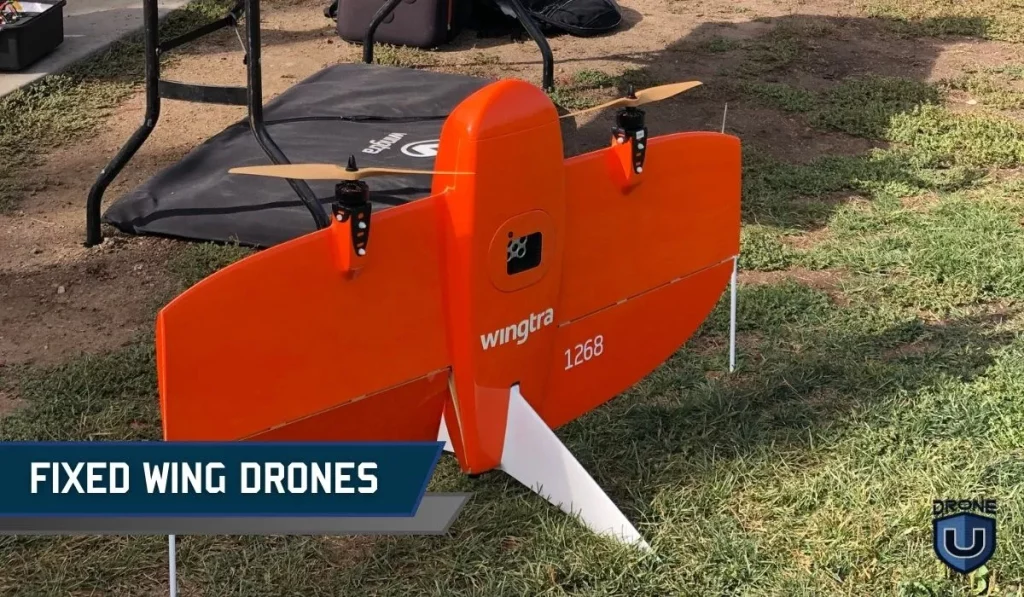
I’ll never forget the day I watched a fixed-wing drone glide across the sky, gracefully.
This little wonder mapped the entire vineyard in less time than it takes to enjoy a glass of the estate’s finest Cabernet.
It wasn’t just the drone’s efficiency that struck me.
What we are witnessing is a quiet revolution in how fixed wings drones are changing our world, one flight at a time. These winged wonders, with their airplane-like design, are opening up possibilities we never imagined before.
In this article, we’re about to dive into the world of the top 6 fixed-wing drones that are redefining aerial exploration. Whether you’re a seasoned drone pilot or simply curious about these airborne marvels, you are in for a treat.
So, strap in and prepare for takeoff. We’re about to explore the drones that don’t just fly – they soar into the future of aerial technology. Welcome to the fascinating world of fixed wing drones.
Before we take off, let’s understand how fixed-wing drones are different from the more familiar quadcopters.
What are Fixed Wing Drones?
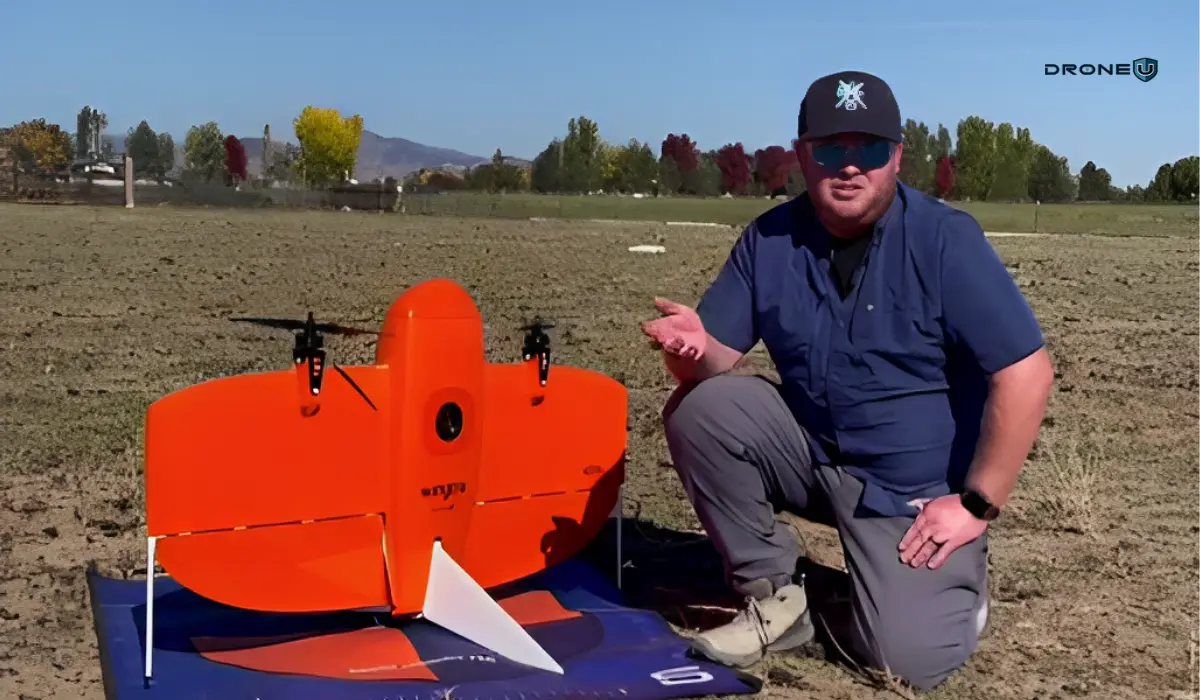
Fixed wing drones, as the name suggests, have a fixed-wing structure, like an airplane, as opposed to the rotary blades seen in quadcopters.
Unlike the more common multi-rotor drones, which use propellers to generate lift and hover, fixed-wing drones rely on their wings to generate lift as they move forward. This makes them much more energy-efficient than multi-rotor drones, allowing them to fly for longer distances and at higher altitudes.
Within the world of fixed-wing drones, there’s a fascinating subcategory known as VTOL aircraft, which stands for Vertical Takeoff and Landing. These hybrid marvels offer the best of both worlds. They can take off and land vertically, just like a quadcopter, in tight spaces, but once airborne, they transition to fixed-wing flight mode.
This hybrid approach grants them the ability to cover larger areas, sometimes even more extensive than classic quadcopters. Their impressive flight times make them well-suited for tasks like gathering geospatial intelligence.
In fact, the crème de la crème of fixed-wing drones often happens to be VTOL aircraft, offering unmatched flexibility and versatility in the world of aerial data collection.
So, if you’re looking to unlock the skies for geospatial insight, keep an eye on these remarkable VTOL machines.
Let’s discover the top 6 fixed-wing drones.
6 Best Fixed Wing Drones with Cameras
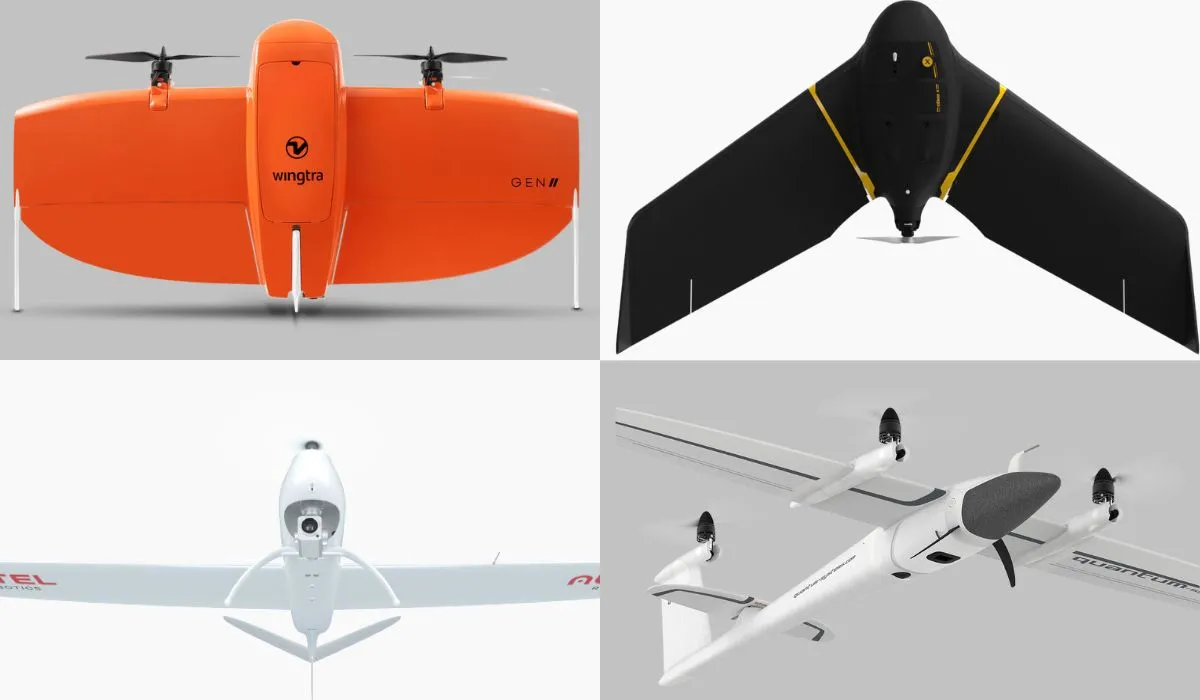
To provide you with a quick overview, here are the names of the best 6 fixed-wing drones with cameras:
- Wingtra One Gen II: The Mapping Maverick
- Trinity F90+: The Endurance Expert
- JOUAV CW-25E: Long Endurance
- eBee X: The Reputable Rival
- Autel Dragonfish Pro: The Endurance Extraordinaire
- Bramore C4 Eye: The Unrivaled King
1. Wingtra One Gen II
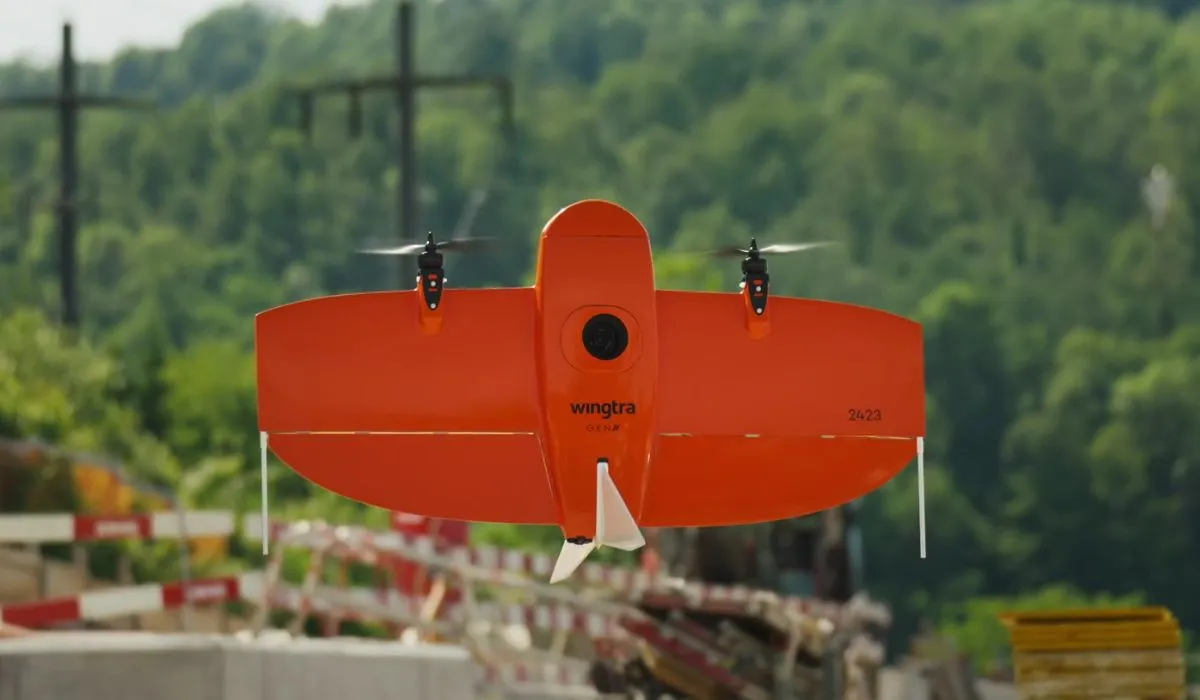 Source: Wingtra
Source: Wingtra
First up in our airborne showcase is the NDAA approved – Wingtra One Gen II.
If you’re in the business of mapping, this is the drone that dreams are made of. Not only does it carry a full-frame camera, but it also boasts the Wingtra Hub software.
What’s the fuss, you ask?
Well, this software allows drone pilots to geo-tag their photos with an almost obsessive level of precision using PPK (Post-Processed Kinematic) positioning.
With this aerial wizardry, the Wingtra One Gen II becomes the Usain Bolt of drones when you pair it with Pix4D React software.
The result?
Lightning-fast creation of geo-referenced orthomosaics. Mapping has never been this breezy.
But wait, there’s more!
This drone is equipped with a range of payloads to cater to your mapping needs, from multispectral to the latest addition, the lidar system.
However, we’d advise you to steer clear of the oblique camera – it’s like putting a fancy hat on a tuxedo-wearing penguin.
Now, let’s get down to the nitty-gritty specs.
Features of Wingtra One Gen II
| Feature | Wingtra One Gen II |
| Weight | 3.7 kg (8.1 lb) |
| Max. payload weight | 800 g (1.8 lb) |
| Wingspan | 125 cm (4.1 ft) |
| Battery capacity | Two 99 Wh batteries |
| Radio link | Bi-directional 10 km (6 mi) in direct line of sight |
| Flight planning & mission control software | WingtraPilot |
| Flight speed | 16 m/s (35.8 mph) |
| Maximum flight time | Up to 59 min |
| Min. space for take-off and landing | 2 m × 2 m (6.6 ft × 6.6 ft) |
| Temperature range | -10 to +40 °C (14 to 104 °F) |
| Weather resistance | IP54, not recommended to fly in fog, rain, and snow. |
| Transmission Distance | 10 Kilometers |
Thanks to the newest partnership, we can help users acquire the Wingtra One Gen 2 and get a discount on our mapping class with their purchase. Email me: paul@thedroneu.com.
2. Trinity F90+
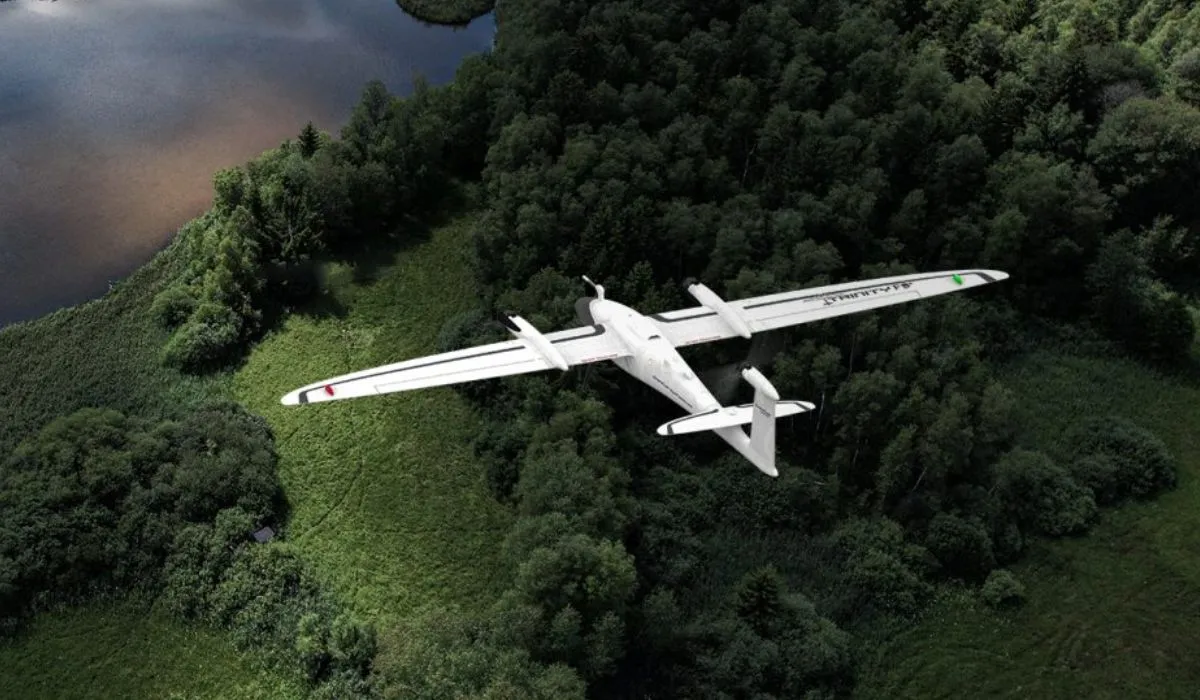 Source: Quantum Systems
Source: Quantum Systems
If this drone were a marathon runner, it would be sipping its victory smoothie while others are still tying their shoelaces. It’s like the Energizer Bunny of the drone world.
But the F90+ doesn’t just go the distance; it also offers a respectable 15-kilometer range for those who like their horizons wide open.
When it comes to covering vast areas, the Trinity F90+ flexes its muscles in comparison to classic multicopters and other fixed wing drones.
Its significantly longer flight time allows it to cover up to 20 times larger areas, making it the go-to choice for those who need to map extensive landscapes.
With a flight time exceeding 90 minutes and the most extensive range of payload options available, the Trinity F90+ stands tall among its peers. It comes equipped with PPK (Post-Processed Kinematic) technology, supported by the Quantum-System iBase Ground Reference Station powered by u-blox, ensuring pinpoint accuracy in every mission.
But it doesn’t stop there; this drone offers RGB and multispectral dual payload options, making it adaptable to various surveying and mapping needs.
The Trinity F90+ also boasts powerful motors, providing reserves of performance in all situations, so you can conquer challenging conditions with ease.
With Live Air Traffic (ADS-B) and QBase Mission Planning, you’re in full control of your flights, ensuring safety and efficiency.
The 2.4 GHz telemetry with a range of up to 7.5 kilometers keeps you connected with your drone at all times. Plus, the optional ADS-B Mode-S out further enhances your situational awareness and safety.
When it comes to mapping and surveying vast landscapes, the Trinity F90+ is the ace up your sleeve. Its extraordinary flight time and robust features make it the top choice for high-end commercial clients who demand precision, endurance, and reliability.
So, whether you’re mapping acres of farmland or miles of terrain, the Trinity F90+ is your trusted partner in the skies.
Features of Trinity F90+
| Feature | Trinity F90+ |
| Weight | 5.5 kg (12.13 lbs) |
| Max. payload weight | 700 g (1.5 lb) |
| Wingspan | 2.394 m (7.85 ft) |
| Battery capacity | Two 100 Wh batteries |
| Flight planning & mission control software | QBase 3D |
| Flight speed | 17 m/s |
| Wind resistance | Max sustained wind: 12 m/s Max wind gusts: 18 m/s |
| Maximum flight time | 90 min (subject to export regulation) |
| Min. space for take-off and landing | 3 m × 3 m (9.8 ft × 9.8 ft) |
| Temperature range | -12 °C to 50 °C (10.4 °F to 122 °F) |
3. JOUAV CW-25E
JOUAV’s CW series is another strong contender, known for its versatility and affordability compared to some other VTOL options.
Its CW-25E is a long-endurance electric fixed-wing VTOL drone. It boasts a long flight time, with estimates ranging from 150 minutes to 210 minutes depending on the payload. This allows it to cover large areas and complete missions without needing to recharge or refuel as often.
With a service ceiling of up to 6,000 meters, the CW-25E can operate at high altitudes, which can be useful for tasks like aerial surveillance, search and rescue in mountainous areas, and meteorological data collection.
Overall, the CW-25E seems like a capable fixed-wing drone that offers a good combination of long flight time, high altitude capability, versatility, ease of use, and durability.
Features of JOUAV CW-25E
| Feature | JOUAV CW-25E |
| Max Flight Time | 210 minutes |
| Cruising Speed | 70km/h |
| Max Service Ceiling | 6000m |
| Max Payload | 6kg |
| GPS | Yes |
| Anti-vibration Capability | Yes |
| Auto-Return | Yes |
4. SenseFly eBee X
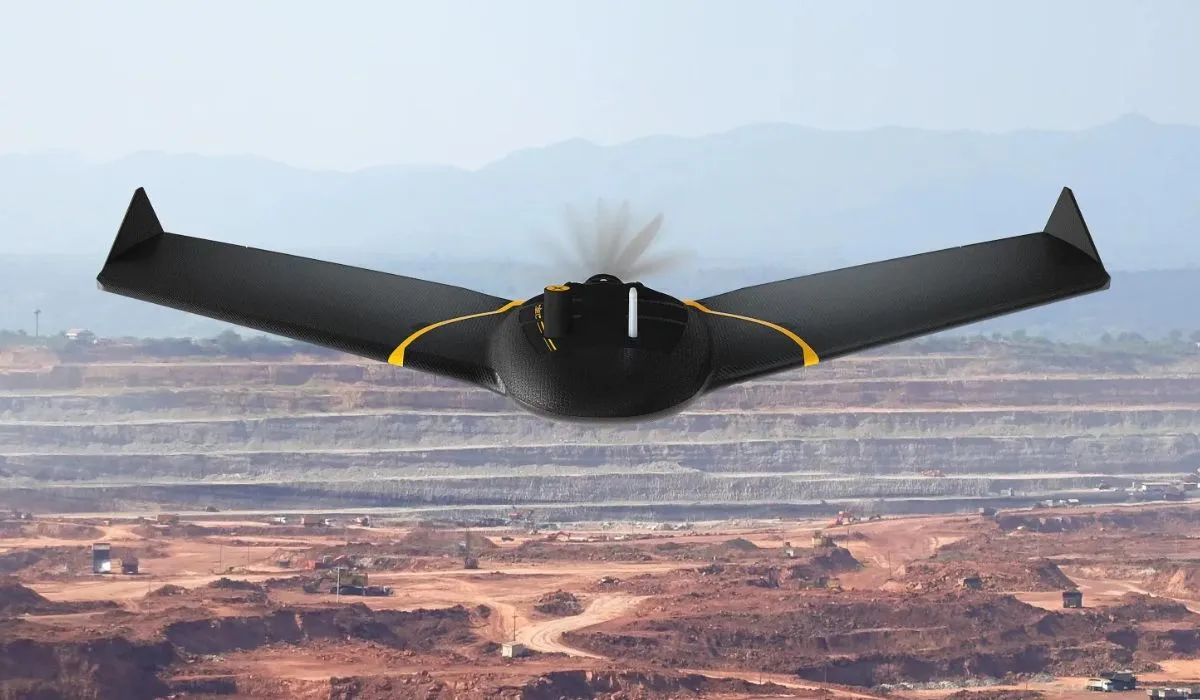 Source: Ageagle
Source: Ageagle
Before the Wingtra stole the spotlight, the eBee X was the darling of the mapping world. It’s still a force to be reckoned with, flaunting a 90-minute flight time that’s just as impressive as its younger competitors.
The NDAA-approved Sensefly eBee X, undoubtedly one of the most popular fixed-wing drones on the market, has earned its reputation as an agricultural mapping workhorse.
But here’s the kicker – it’s not exactly the prom queen when it comes to flying and landing. The eBee X can be a bit on the awkward side, requiring a deft hand and plenty of space to gracefully touch down.
However, its popularity speaks for itself.
With a choice of six different payloads, this drone makes agricultural mapping a breeze. The SenseFly eBee X is well-equipped to meet the precise demands of any project. Its unique Endurance Extension pushes the envelope, offering a staggering maximum flight time of 90 minutes, allowing you to cover vast expanses of up to 1,235 acres at 400 feet AGL.
The eBee X offers a 10-kilometer range, making it the drone equivalent of a seasoned road-tripper who knows all the shortcuts.
Additional RTK activation lets you achieve pinpoint accuracy down to 3 centimeters (1.2 inches), all without the need for Ground Control Points.
It might not win any elegance contests in the air, but it gets the job done with precision and reliability.
Features of SenseFly eBee X
| Feature | SenseFly eBee X |
| Weight | 2.3 kg (5.07 lb) |
| Max. payload weight | 1.4 kg (3.09 lb) |
| Wingspan | 1.68 m (5.51 ft) |
| Battery capacity | Two 80 Wh batteries |
| Flight planning & mission control software | eMotion 3 |
| Tablet supplied | Rugged Samsung Galaxy Tab Active 3 |
| Flight speed | 18 m/s (37.8 mph) |
| Maximum flight time | Up to 90 min |
| Min. space for take-off and landing | 10 m × 10 m (33 ft × 33 ft) |
| Temperature range | -10 °C to +40 °C (14 °F to 104 °F) |
5. Autel Dragonfish Pro
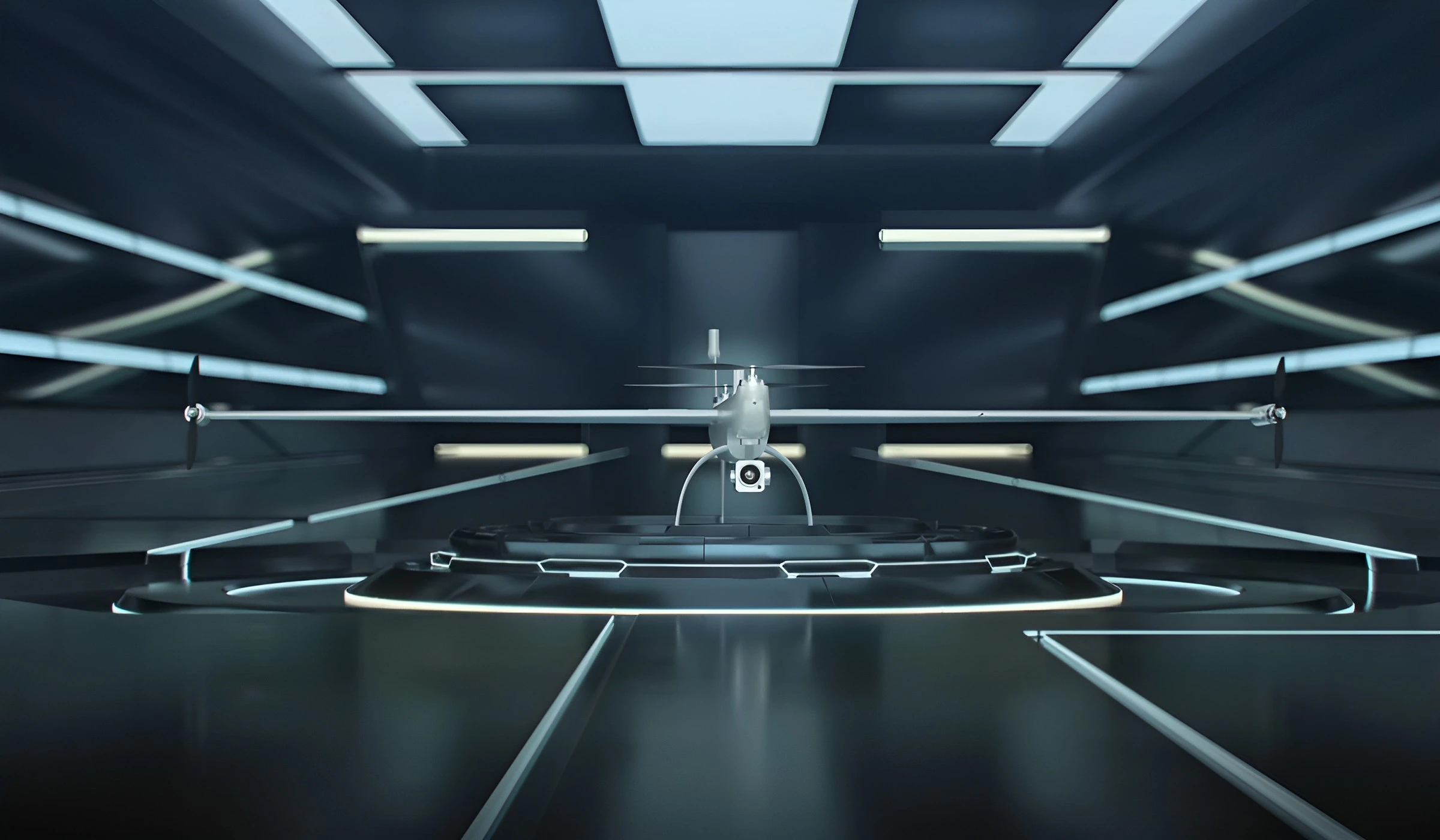 Source: Autel Pilot
Source: Autel Pilot
Now, let’s turn our attention to the Autel Dragonfish Pro, the undisputed champion of fixed-wing drones.
This drone could redefine the meaning of “flight time.”
With a jaw-dropping 158 minutes in the air, it’s like having a drone butler that never gets tired.
And it’s not just about staying up there forever; the Dragonfish Pro also offers a 15-kilometer range, ensuring you can cover vast areas with ease.
But what truly sets the Dragonfish Pro apart is its unparalleled vertical takeoff and landing (VTOL) performance.
While other drones, like the Wingtra, are bound to autonomous missions, the Dragonfish Pro offers the flexibility of being flown manually, just like a regular drone. This exceptional capability puts it head and shoulders above the rest.
The Dragonfish’s unique tilt-rotor design simplifies operation while maximizing performance and efficiency.
With no complicated moving parts to worry about, this drone is modular, waterproof, smart, and incredibly reliable.
It’s mission-ready straight out of the box and includes powerful AI tracking capabilities along with a wide range of modular payload options, allowing it to adapt to various tasks seamlessly.
With an endurance of up to 158 minutes, including the payload, the Dragonfish Pro sets a new bar for mission capabilities, firmly establishing itself as the frontrunner in the world of fixed-wing drones.
Features of Autel Dragonfish Pro
| Feature | Autel Dragonfish Pro |
| Weight | 8.5 kg (18.7 lbs) |
| Max. payload weight | 1.8 kg (4 lbs) |
| Wingspan | 1.6 m (5.25 ft) |
| Battery capacity | Four 174 Wh batteries |
| Radio link | Bi-directional 30 km (18.6 mi) in direct line of sight |
| Flight planning & mission control software | Autel Voyager |
| Flight speed | 108 km/h (67 mph) |
| Maximum flight time | 180 min |
| Min. space for take-off and landing | 3 m × 3 m (9.8 ft × 9.8 ft) |
| Temperature range | -20 to +50 °C (-4 to +122 °F) |
6. Bramore C4 Eye
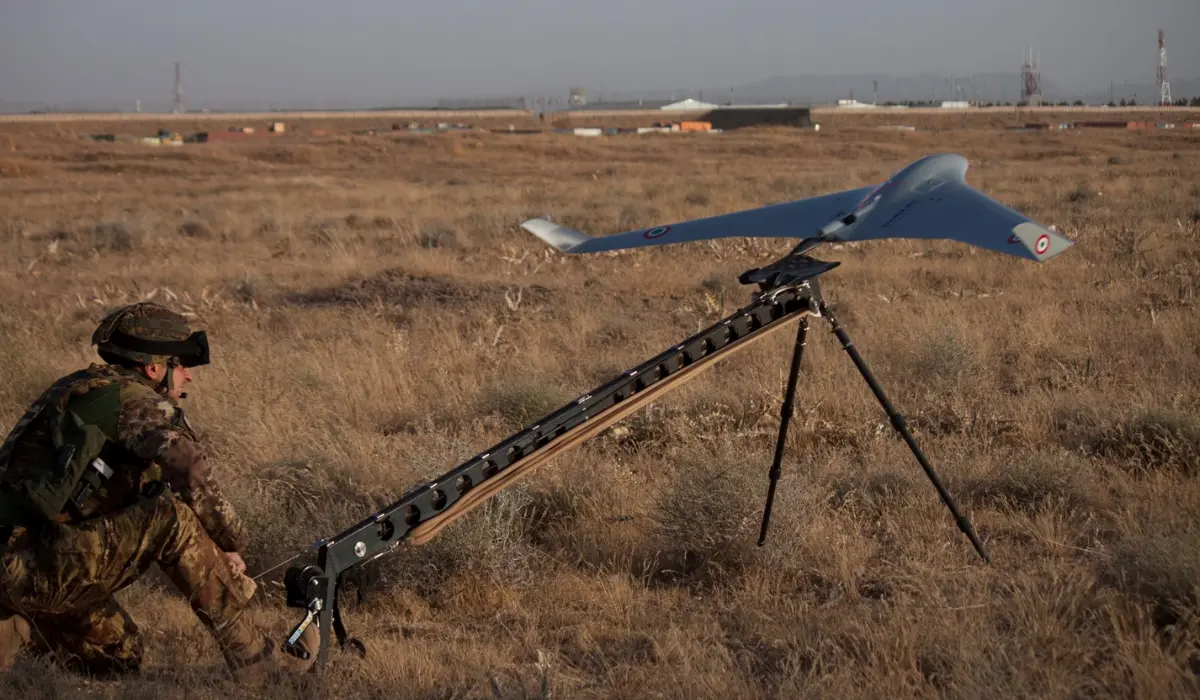
And now, we come to the unrivaled king of the fixed-wing drones, C-Astral’s Bramor C4EYE.
If you thought the Dragonfish Pro’s flight time was impressive, brace yourself – the Bramor C4EYE soars above the competition with an astonishing flight time of 3 hours aloft.
These industry-leading unmanned aircraft systems are electrically powered, boasting superior stability and endurance, thanks to their unique advanced Blended Wing Body airframe aerodynamics.
But it’s not just about the time in the air.
The Bramor offers an array of impressive payload combinations, ensuring that every byte of data, from digital to thermal/IR, is collected with utmost precision.
If you’re engaged in serious fixed-wing drone applications, whether for mapping, surveillance, or any other task that demands uncompromising endurance, the Bramor is the crown jewel you’ve been seeking.
With its extended flight capabilities, it’s more than a drone; it’s a kingdom in the skies.
Features of Bramor C4EYE
| Feature | C-Astral’s Bramor C4EYE |
| Weight | 4.7 kg (10 lb) |
| Max. payload weight | 1 kg (2.2 lb) |
| Wingspan | 2.3 m (7.7 ft) |
| Battery capacity | Two 93 Wh batteries |
| Radio link | Standard: 40 km (25 mi) LOS Extended: 150 km (93 mi) |
| Flight planning & mission control software | Bramor GCS |
| Tablet supplied | Rugged tablet with 10.1-inch screen |
| Flight speed | 20 m/s (45 mph) |
| Wind resistance | Max sustained wind: 30 knots (35 mph) |
| Maximum flight time | 3.5 hours |
| Min. space for take-off and landing | 2 m × 2 m (6.6 ft × 6.6 ft) |
| Temperature range | -20 to +50 °C (-4 to +122 °F) |
Frequently Asked Questions
1. What are VTOL aircraft, and how do they differ from traditional fixed-wing drones?
VTOL (Vertical Takeoff and Landing) aircraft are a subcategory of fixed-wing drones that can take off and land vertically, similar to quadcopters. Once airborne, they transition to a fixed-wing flight mode, allowing them to cover larger areas, making them well-suited for tasks like geospatial intelligence gathering.
2. Are there legal regulations and requirements for operating a fixed wing drone?
Yes, operating fixed-wing drones, like all drones, is subject to legal regulations. These drone regulations may include registration, pilot certification, and adherence to airspace restrictions. Compliance with local, national, and international aviation laws is crucial. Always check with your local aviation authority for the latest drone rules and requirements.
3. Are fixed-wing drones more challenging to operate than quadcopters?
Fixed-wing drones often require more space for take-off and landing due to their design. Their flight characteristics are different from quadcopters, which can make them challenging for beginners. However, with proper training, they can be operated effectively by both novice and experienced pilots.
4. What is the range of a fixed-wing drone?
Here’s a general idea of the range you might expect:
- Small fixed-wing drones: These can range from hobbyist models with a range of just a few miles (under 10km) to commercial models capable of 50-80 miles (80-130km).
- Medium fixed-wing drones: These can cover longer distances, typically in the 100-200 mile (160-320km) range.
- Large fixed-wing drones: These are high-end commercial drones designed for long-range missions and can fly hundreds of miles (over 320km) on a single charge.
5. Does DJI make fixed-wing drones?
No, the DJI does not currently manufacture fixed-wing drones.








Add Your Comment